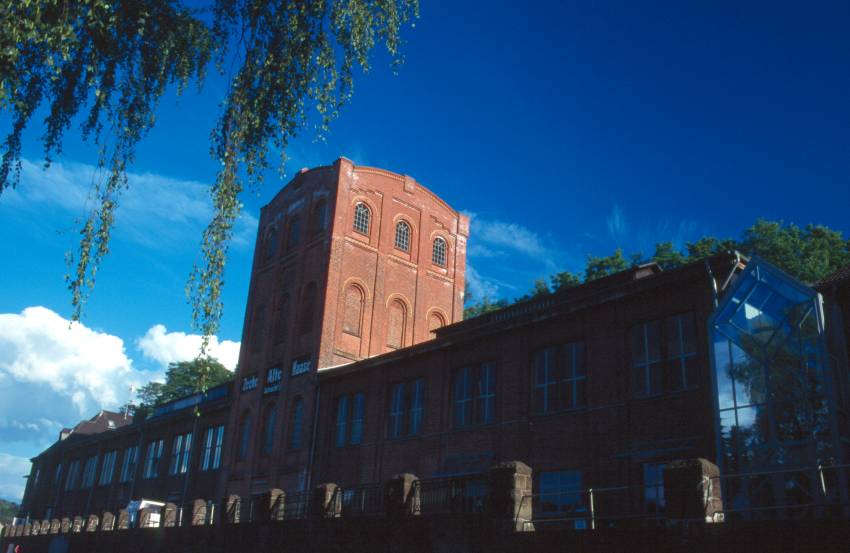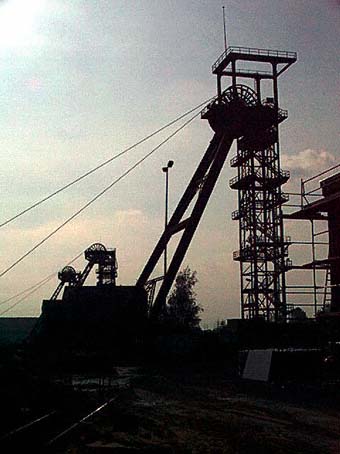|
The history of mining in the Ruhr area (Germany) |
|
The consequences became clearly visible: The working conditions stayed hard, but because of the technical development there was a strong improvement. Small collieries with only a few tunnels became larger and larger. An example for this is the Alte Haase colliery that can be seen in the photo below. It started with a few tunnels and grew in the next years. In the late 19th century the Malakoff winding tower was built and lateron another metal tower was integrated into it.
(Photo: Alte Haase colliery in Sprockhoevel (Germany), thanks to our former YAHOO!-Group) The technical development made it possible to build deeper shafts, as well. The first ones were not deeper than 30 metres, but soon the new shafts reached 100 to 200 metres and a few years later coal could be extrated from seams in the depth of 1000 metres and more. Now we are in the age of modern collieries. Today's mining is highly mechanized. The most modern computers control and coordinate the work underground, the machines used underground are not less mechanized and computerized. Today's collieries have an output of more than 10.000 tons of pure hard coal (i.e. without the waste material) per day. The miners' work underground has changed, as well. In earlier times mostly pure manual work had to be done, lateron supported by technical development. Today nearly everything that has to be done is computer-aided and/or computer-controlled. In earlier times being a miner was a dangerous job, because of the firedamp explosions, collapsing of roadways etc. - today the number of bad accidents is very low, even in comparison to other industrial sectors. By the way: This is different in other countries where hard coal is produced - in these countries even today lots of miners die because of the very poor working conditions and safety regulations. I hope that the journey through the history of hard coal mining
has given much pleasure to you. At the end I want to present you two books to
read more about the German mining history. Additionally these books are the sources from
which I took
the information for this text. Hermann, Wilhelm und Gertrude: "Die alten Zechen an der Ruhr" - a very good book with a long introduction about the history of mining in the Ruhr area and a second part with a list of nearly all collieries in the Ruhr area, from the small ones with a few tunnels to the large ones with several shafts. Annotation: The book is written in GERMAN !!!!! Pflaeging, Kurt: "Steins Reise durch den Kohlenbergbau an der Ruhr" - a documentation based on what Baron v. Stein wrote during his inspections in the Ruhr collieries during the 17th century. This book explains the production, transportation etc. methods and shows the working conditions in the old collieries - very interesting ! Annotation: The book is written in GERMAN !!!!!
(Photo: Radbod colliery as a contre-jour shot, thanks to our former YAHOO!-Group)
|

